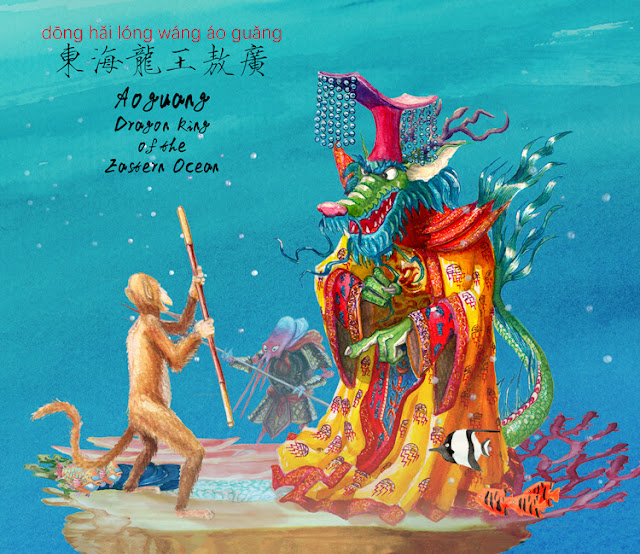Licking aphids
When out walking the dogs I passed a giant
bamboo, and there was a deafening buzzing sound coming from it. I got closer,
and the leaves of the thing were covered in bumblebees, honey bees, ants, all
sorts in a furious cloud.
Which is odd. Aren’t bees just supposed to
go for nectar? Is the bamboo putting out some kind of sweet sap or something?
So I asked my sister, a lady with a
chainsaw trained to know about these things, and she said it’s quite normal,
they’re just hanging out licking aphids.
So I went back and she was dead right –
tiny little white aphids covered all the bamboo leaves.
Why would you want to lick an aphid?
For the sugar, it turns out.
I remember something about ants ‘farming’
aphids like dairy cows, ‘milking’ the honeydew aphids produce as food. Some
ants even nurture ‘herds’ of aphids, and others take aphids’ eggs into their
nest over the winter.
Well, the bees and other insects on this
plant are doing the same thing, eating aphids’ honeydew, but are being more
opportunistic. The bees use honeydew just as they use nectar: As sugar-water
that they can turn into honey, which is then stored in the hive to be eaten
later. The bees lick the honeydew off the aphids, or more commonly from the
copious amounts the aphids drop onto the leaves.
English names: Woolly aphid (other species are known as greenfly and blackfly, aphids’ colours vary greatly)
Chinese name: 綿蚜 mián yá
Family: Aphididae (蚜科yá kē, the aphid family)
Subfamily: Eriosomatinae
For farmers and gardeners, aphids are a terrible destructive force! They feed by sucking the sap of plants, weakening them, and the honeydew they produce (a sugar-rich sticky, clear liquid) sticks to the plant and spreads fungi (a sooty mould that gardeners loathe).
They don’t lay eggs. Flightless females give birth to a host of other flightless females without males involvement (they’re clones), then they start colonising the plant. Later in the season she gives birth to winged females that can head off to start new colonies on other plants. Males do mate with females in autumn, which leads to a batch of eggs which is how aphids live through the winter.
English names: Bumblebee*
The English name ‘bumblebee’ first appears in the Middle Ages, referring to the way the bees bumble around in a clumsy, awkward way.
Chinese name: 熊蜂 xióng fēng (‘bear’ bee, for its fat, furry appearance)
Family: Apidae (蜂科fēng kē, the bee family, mainly bumblebees and honeybees)
Genus: Bombus (‘booming, buzzing, humming,’ 熊蜂属xióng fēng shǔ)
Latin name: Bombus schrencki (orange back white bum), Bombus muscorum (orange back pale yellow abdomen) **
They live in small colonies of a few hundred at most. They have short tongues (proboscis), and so generally pollinate open (shallow) flowers. The thick fur is insulation, bumblebees are much better at living in colder climates than other bees. Bumblebees can warm themselves up by intensely vibrating, and in cold weather have to do this before they can fly.
Although bumblebees do not have the elaborate ‘honey dances’ of honeybees, they are known to ‘excitedly run around in the nest for several minutes’ after they find a good source of food, tipping off their coworkers.
In spring the queen emerges from her winter sleep, finds a suitable hole for her colony and starts laying eggs. Unlike the neat, hexagonal combs of honeybees, bumblebees make little ‘cups’, the queen lays up to 15 eggs in each.
These eggs turn into female workers, who then collect nectar and pollen and bring it back to the nest. Most bumblebees are female – a colony is the queen and all her daughters doing the work. Near the end of the summer she’ll lay a batch of eggs that turn into males, but their sole job is to go off an mate with a new queen. Then die. Most of the males don’t even get to do their one job in life. This new queen with her now fertilised eggs goes to find a place to sleep through the winter, and the old nest and old queen all die off.
Bumblebees are not aggressive, only the females can sting and will only do so if cornered.
Both bumblebees and honeybees have hind legs that have evolved into ‘pollen baskets,’ (the scientific name corbicula (plural corbiculae) is Latin diminutive for basket) with long hairs that trap and transport pollen – bee larva are fed nectar for carbohydrates, but they also need pollen for protein.
English names: Asiatic honeybee
Chinese name: 蜜蜂 mì fēng (same as English, honey 蜜 + bee蜂)
Family: Apidae (蜂科fēng kē, the bee family, mainly bumblebees and honeybees)
Genus: Apis (the honeybee, Apis is Latin for "bee")
Latin name: Apis cerana
Honeybee hives have around 50,000 bees. They famously have the bee waggle dance to tell their comrades where food sources are located.
Male drones can sting you but will die after doing so, so they don’t do it lightly.
* To be pedantic, it should be ‘bumble bee’
and ‘honey bee’ (separated by a space) not ‘bumblebee’ and ‘honeybee’, because
they are both types of bees. It’s proper to write ‘butterfly’ and ‘dragonfly’
as one word as they’re not flies – but as bumblebee and honeybee are much more
commonly used I went with that.
** Of the two species of bumblebees I’ve
seen, both kind of match, and they’re definitely in China, but… If I’ve got it
wrong and you know the species please let me know.







Comments
Post a Comment